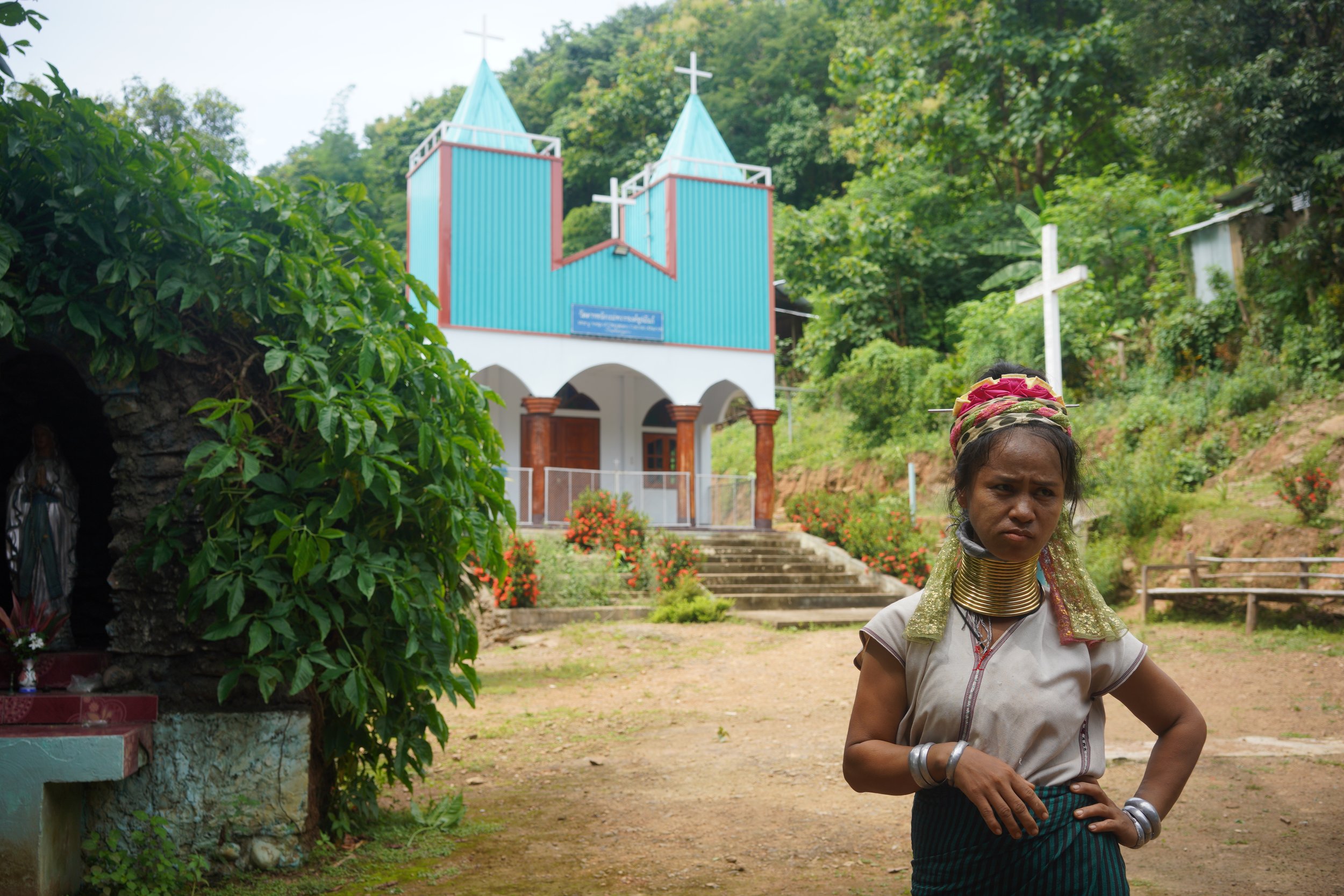Use Horizontal view for better visual experience
Our ‘At the Heart of the Golden Triangle’ Journal
For well over a decade we have been fascinated with the textiles of the Hill Tribe peoples of the Golden Triangle. This region is home to various ethnic groups, and we have visited it multiple times, both as a couple and individually. The first trip took place in 2007. During our visits, we have researched, explored, and sometimes lived in the provinces of Chiang Mai, Chiang Rai, and Mae Hong Son in Thailand, as well as visited twice Vientiane and Luang Prabang provinces in Laos and twice the Yunnan Province in China. Due to political turmoil and civil unrest we have not been able to visit territories within Myanmar (Burma) yet.
We hope that by sharing our experiences, we can raise awareness about the Hill Tribe peoples of the Golden Triangle and the challenges they face. We encourage everyone to learn more about these communities and support efforts to protect their unique cultural heritage for future generations.
About
As a family of six, our journey reflects a commitment to understanding the intricate relationships between nature, culture, and conservation around the world. Each destination we explore reveals powerful narratives of coexistence and conflict that shape the identity of its people and landscapes.
We are honored to experience ancient traditions that honor the earth, while also learning about contemporary efforts to safeguard our planet. This dynamic engagement helps us appreciate the balance that must be maintained between development and preservation. We Journal as a family in an effort to capture the lessons and revisit them in the future.
Throughout our travels, we closely observe how cultural heritage and environmental stewardship interact, sometimes harmoniously and at other times in tension. By immersing ourselves in diverse communities, we gain insights into their unique challenges and triumphs.
Together, we are navigating this complex terrain, uncovering the lessons that each place offers about resilience, adaptation, and the shared responsibility we all hold in caring for our planet. Thank you for joining us on this enlightening journey.
Let’s unpack the Golden Triangle!
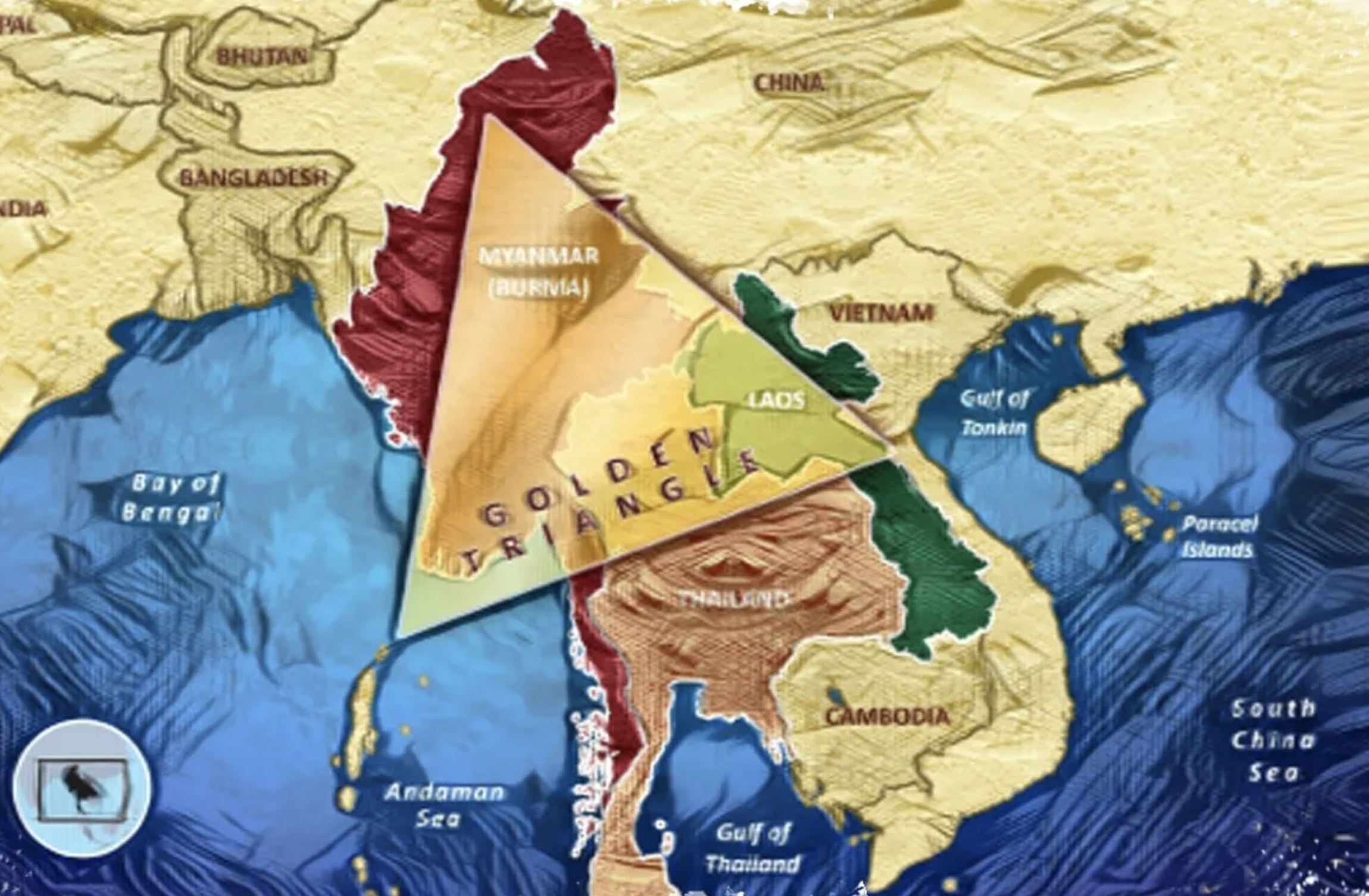
Let’s start off with the Triangle’s unique topography
The Golden Triangle is a geographically complex and culturally rich region that spans approximately 200,000 km² (about the size of France) across northeastern Myanmar, northwestern Thailand, and northern Laos. This area is characterized by its dramatic mountainous topography, featuring rugged hills and steep slopes that create a diverse landscape.
The region's elevation varies significantly, with mountainous areas rising to over 2,000 meters above sea level, particularly in the northern sections of Myanmar and Laos. These highlands are interspersed with deep valleys and river systems, most notably the confluence of the Ruak and Mekong rivers. The Mekong River, one of the longest rivers in the world, flows southward through the region, creating a vital waterway that shapes both the ecological and cultural landscapes.
Historically, this topography has influenced the livelihoods of local communities, many of whom rely on the cultivation of crops such as rice and opium poppy, although the latter has significantly decreased in recent years due to successful eradication efforts. The rugged terrain provides natural defenses and seclusion, allowing various ethnic groups to preserve their unique cultures and traditions.
Today, the Thai area of the confluence, particularly Sop Ruak, has transitioned from an area historically associated with the opium trade to a tourist destination. The transformation of this region reflects a significant shift in focus towards sustainable tourism and cultural exchange, while still acknowledging its complex history.
Mae Hong Song
The Golden Triangle's geography creates a tapestry of microclimates supporting diverse vegetation, from rainforests to woodlands. These forests boost agriculture and habitats, while traditional farming enhances biodiversity and diverse ethnic communities. Endemic species highlight ecological importance, making conservation essential. But it hasn’t been easy since it became the major production area of heroin in the world.
Driving along the Thai-Lao-Myanmar Borders
Myanmar, formerly known as Burma, has been in a state of civil war for over 70 years. The conflict began shortly after the country gained independence from Britain in 1948 and has been fought between the Myanmar military and various ethnic groups seeking autonomy and self-determination. One of the most significant consequences of this conflict has been the displacement of hundreds of thousands of people, particularly those from ethnic minority groups such as the Karen. The Karen people have been subjected to violence, persecution, and land confiscation by the Myanmar military, forcing many to flee their homes and seek refuge in neighboring countries such as Thailand. The migration of Karen people to Thailand has been ongoing for several decades, with many settling in refugee camps along the Thai-Myanmar border. However, life in these camps is far from ideal, with limited access to education, healthcare, and employment opportunities. Many Karen people have also faced discrimination and hostility from the Thai government and local communities.
The civil war in Myanmar continues to this day, with the military coup in February 2021 leading to an escalation of violence and displacement. The situation has prompted renewed attention to the plight of ethnic minority groups such as the Karen and the need for greater support and protection.
Despite the challenges they have faced, the Karen people have shown remarkable resilience in preserving their culture and traditions. As the conflict in Myanmar continues, it is crucial to understand and support those affected by the violence and displacement.

The Mekong River and its Tributaries.
The Mekong River is crucial for the region, as it provides a significant source of water. However, the river's flow can change greatly with the seasons and upstream activities, leading to water shortages during dry spells. Intensive agricultural practices, especially the cultivation of opium poppies, further increase the demand for water, putting additional pressure on the already limited resources.
Many communities in the Golden Triangle struggle with access to clean water because of inadequate infrastructure for treatment and distribution. Additionally, environmental issues such as deforestation and land degradation have reduced the area's capacity to retain water, adversely affecting availability. Lastly, managing water resources in the Golden Triangle is complicated by the need for coordination across multiple countries, as shared water management agreements are essential for sustainability.
About the Peoples of the Golden Triangle & The Hill Tribes
The hill tribes of Thailand are a diverse group of ethnic communities that have settled in northern Thailand for various reasons throughout the decades and centuries. It is debated amongst anthropologists and other scholars if the hill tribes migrated originally from the Tibetan region or truly originated in the somewhat lower regions of currently Yunnan, China. Hill tribes are an essential population of the region, and their rich cultural heritage has long fascinated outsiders.
In the Picture: A Grandmother plays a Karen traditional song on her makeshift guitar. Migrated to Thailand from Burma, now Myanmar, in the mid 1990s and has lived since in this refugee settlement we visited.
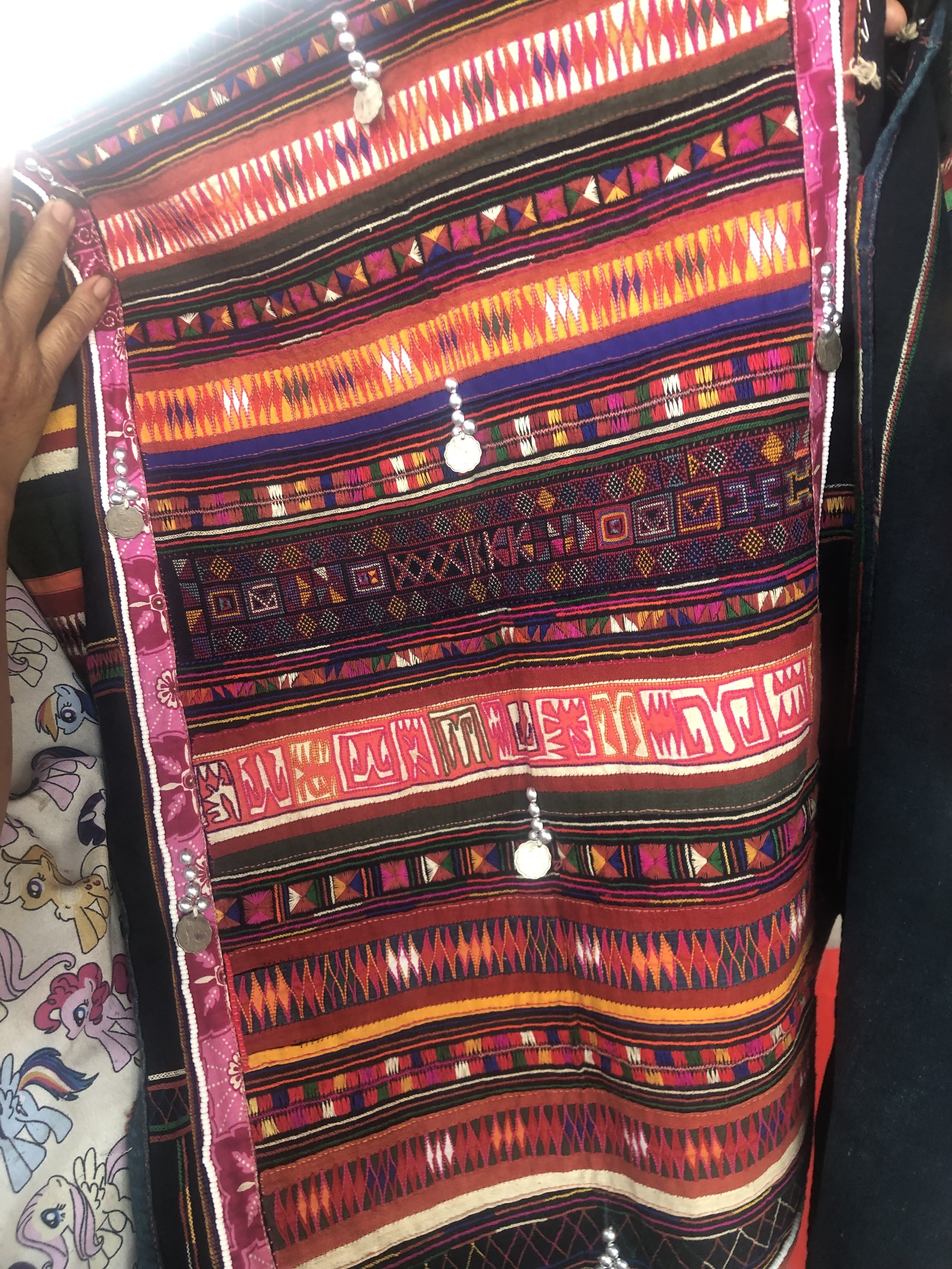
The Exploitation & Undermining of the People of the Golden Triangle
The hill tribes people of the Golden Triangle have long faced exploitation due to their marginalized status and the demand for their resources and labor.
The hill tribes have faced numerous challenges, including poverty, discrimination, and exploitation. They are often isolated from mainstream society, making it difficult for them to access education, healthcare, and employment opportunities. Moreover, many hill tribe communities have been adversely affected by the civil war in Myanmar, which has led to the displacement of hundreds of thousands of people. Despite these challenges, the hill tribes have shown remarkable resilience in preserving their culture and traditions. The Thai government and various NGOs have worked to provide support and assistance to the hill tribes, helping them to access education, healthcare, and employment opportunities. However, more needs to be done to ensure that the hill tribes are protected from exploitation and abuse, and their unique cultural heritage is preserved for future generations.
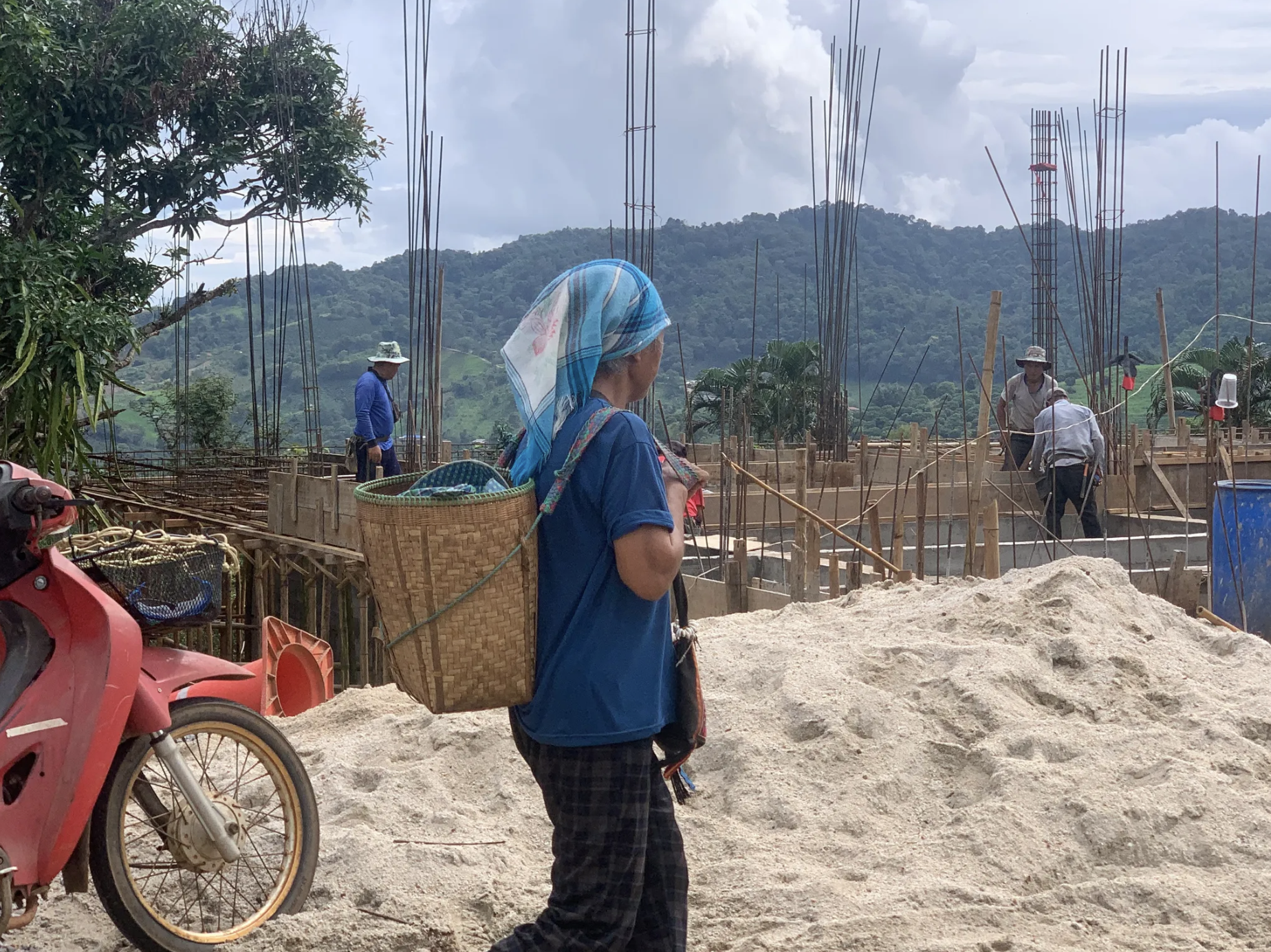
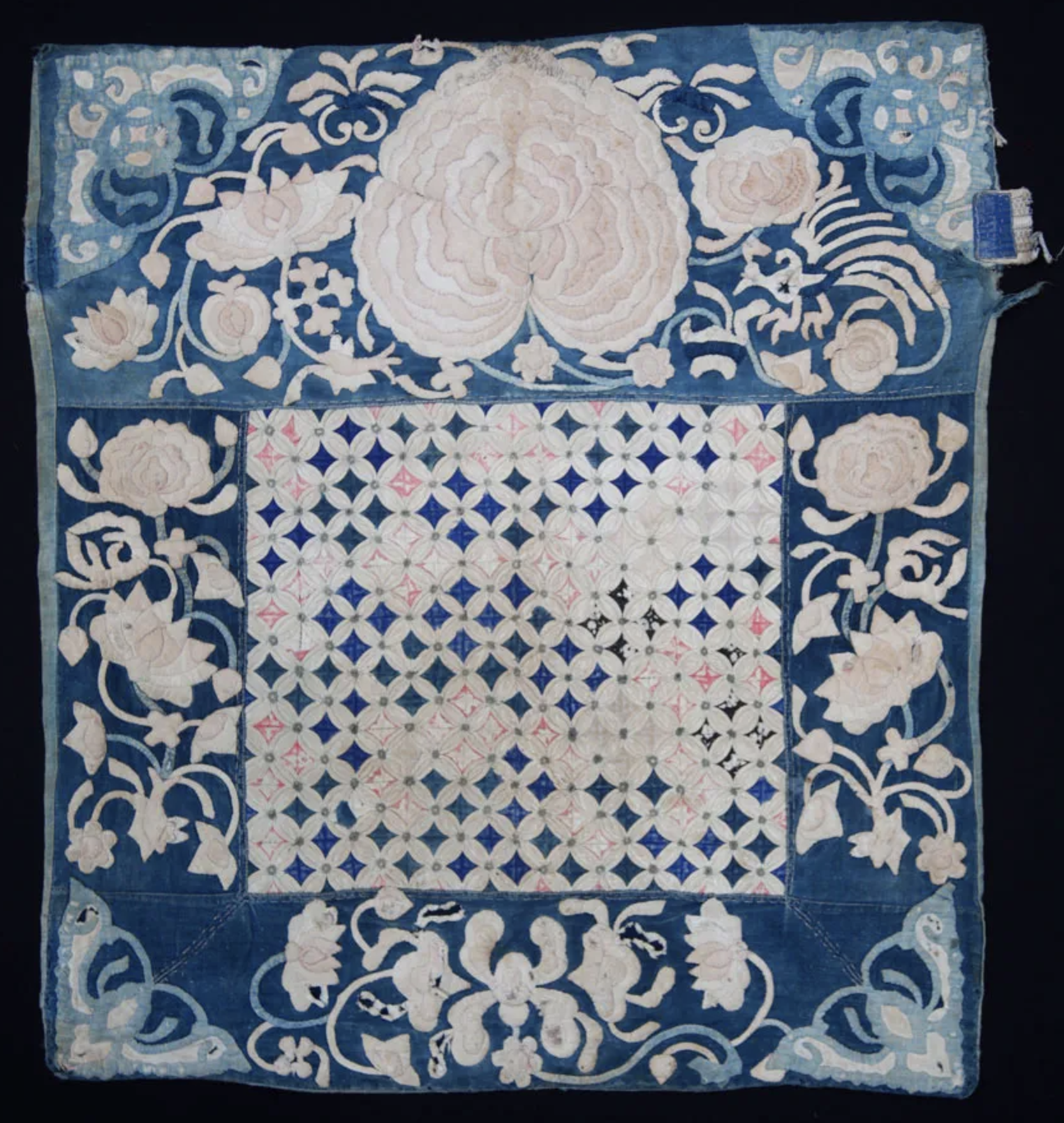
“Our Passion for Hill Tribe Textiles has Thought us a Whole Dimension of Reality”
Our textile collection primarily showcases fabrics from the Golden Triangle. This pursuit has led us to travel thousands of kilometers across borders, allowing us to connect with and understand the communities that produce these textiles. Often, this journey reveals not only the textiles themselves but also deeper aspects of life in the region, enhancing our comprehension of local cultures and the broader dynamics of human trade.
Visiting a Red Karen village
Thai-Myanmar Border
And the polemic of cultural and ethnic exploitation by the tourism industry, it turns out that exotic-looking cultures have been relocated to accessible areas to draw tourists to the region.
“But when Thai business people recognized the money-earning potential of the exotic-looking women, they suggested they move to three artificial villages near Mae Hong Son.”

“Since the arrival of the first group of Kayans in late 1984,
this tribe have been of interest to the provincial government of Mae Hong Son, the United
Nations High Commissioner for Refugees, NGOs and tourism developers. All of these
groups, in one way or another, claim to be protecting the interest of the Kayans. This
thesis investigates the validity of claims that Kayan interests are being protected. ”
Who Are the Karen?
The Karen people, recognized as the largest ethnic minority in the border area, originate from Burma and possess a complex history that is, unfortunately, marked by a long-standing pattern of conflict and persecution. Despite facing ongoing challenges and adversities, they continue to demonstrate remarkable resilience and a deep pride in their rich cultural heritage. In recent years, they have taken strong and determined steps to advocate for an independent state in the face of oppressive military forces, and in doing so, they have gained considerable global support from various international communities. The Karen people actively maintain their distinctive traditions, which include their unique language, vibrant dress, captivating music, and expressive dance forms. Notably, the Red Karen subgroup is widely recognized for their striking tradition of wearing brass rings around their necks, a practice that is integral to their cultural identity and reflects their rich historical significance.

Angelina Jolie, UNHR Envoy and Actress
“I was saddened to meet a 21-year-old woman who was born in a refugee camp, who has never even been out of the camp and is now raising her own child in a camp.”
Positive Impact in a Refugee Operated Hotel
This has been one of the most memorable hotel experiences we’ve encountered. It wasn’t until checkout that we recognized the uniqueness and educational aspects of our stay. A late check-in meant that our arrival was lit only by the beams from motorbike headlights guiding us down a muddy road to accommodations distant from the reception area.
After crossing a wooden bridge over a dark river, we reached a bamboo shack that contained two beds, a standing fan, and mosquito nets with some damage. The place was unstaffed, inhabited only by a single mother weaving with her newborn tied to her chest. With no English communication, we had no choice but to accept our stay for the night and attempt to find rest.
It wasn't until the morning that we discovered a single piece of information indicating that we were hosted by a refugee program for immigrants from the Shan region. As we woke, the sound of an elephant drew us out of our cabin. We were treated to the sight of four elephants bathing in the river, inviting us to share a basket of fruit with them.
Swing Festival at the Akha Village
Thai-Lao Border
The Akha People are an ethnic minority group who live in the hills of northern Thailand, Laos, and Myanmar.
The Swing Festival is a three-day event that takes place during the month of August and is celebrated by Akha communities throughout the region.
The festival is a time for the community to come together and celebrate their culture through music, dance, and the swinging of large bamboo swings.
One of the most important aspects of the Swing Festival is the traditional clothing worn by the Akha people. Men wear black or dark blue jackets with embroidered collars, while women wear colorful dresses and headdresses adorned with silver coins and beads. The festival also features traditional Akha music and dance performances, as well as food and crafts.

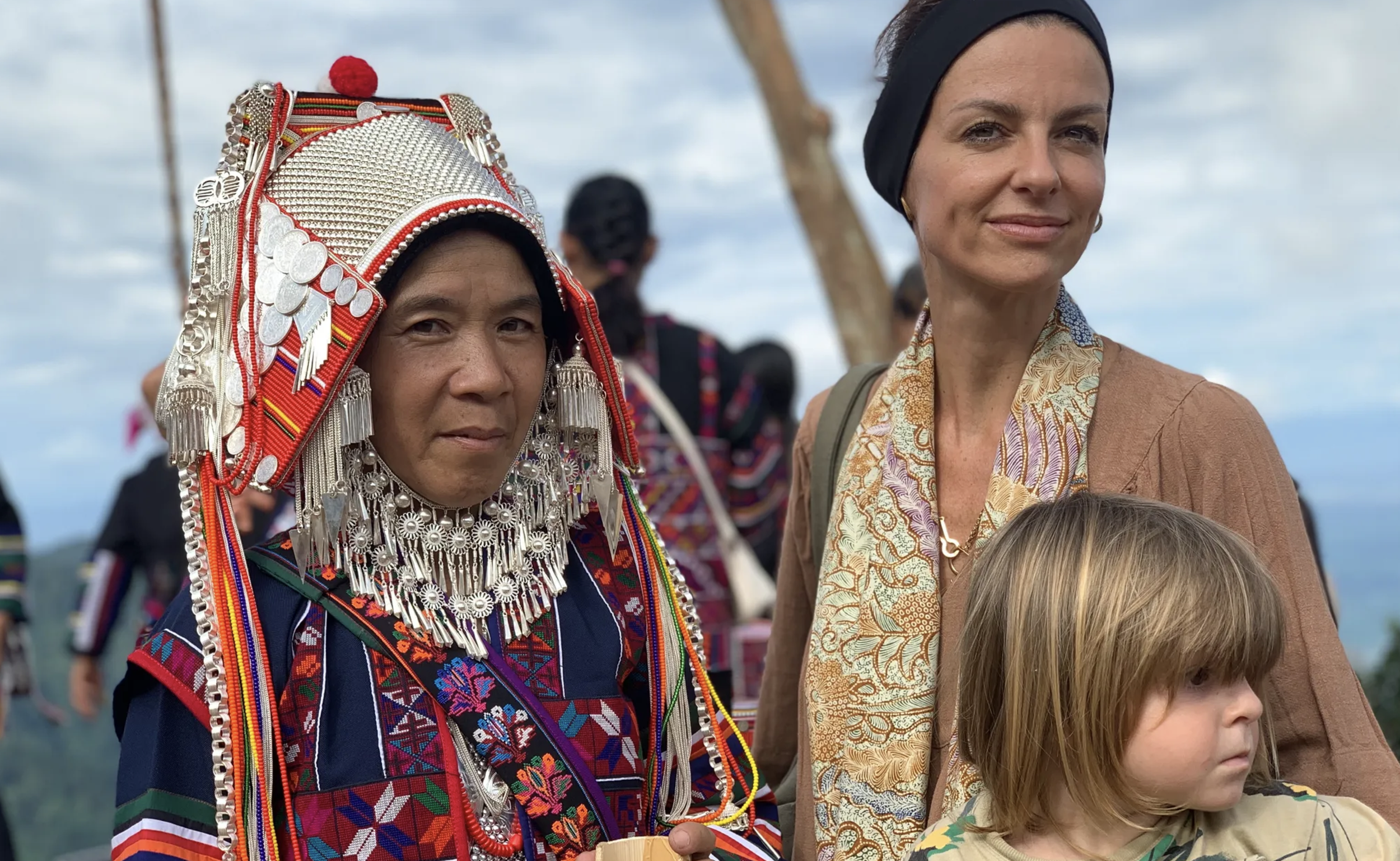
But Hill Tribes are a Target of Modern-Day Slavery
The Akha people have a rich and beautiful culture, that’s why we've come here, but they also face a multitude of challenges that can't be ignored and need to be shared. One of these challenges is the legacy of poppy cultivation, which was once the epicenter of the region. Just 50 years ago, the area where world-class coffee plantations now stand was covered in poppy plants, which created the conditions for addiction, crime, and extortion to permeate the community and family life for generations. This has had long-lasting effects on the Akha people, who continue to suffer from the aftermath of the poppy cultivation.
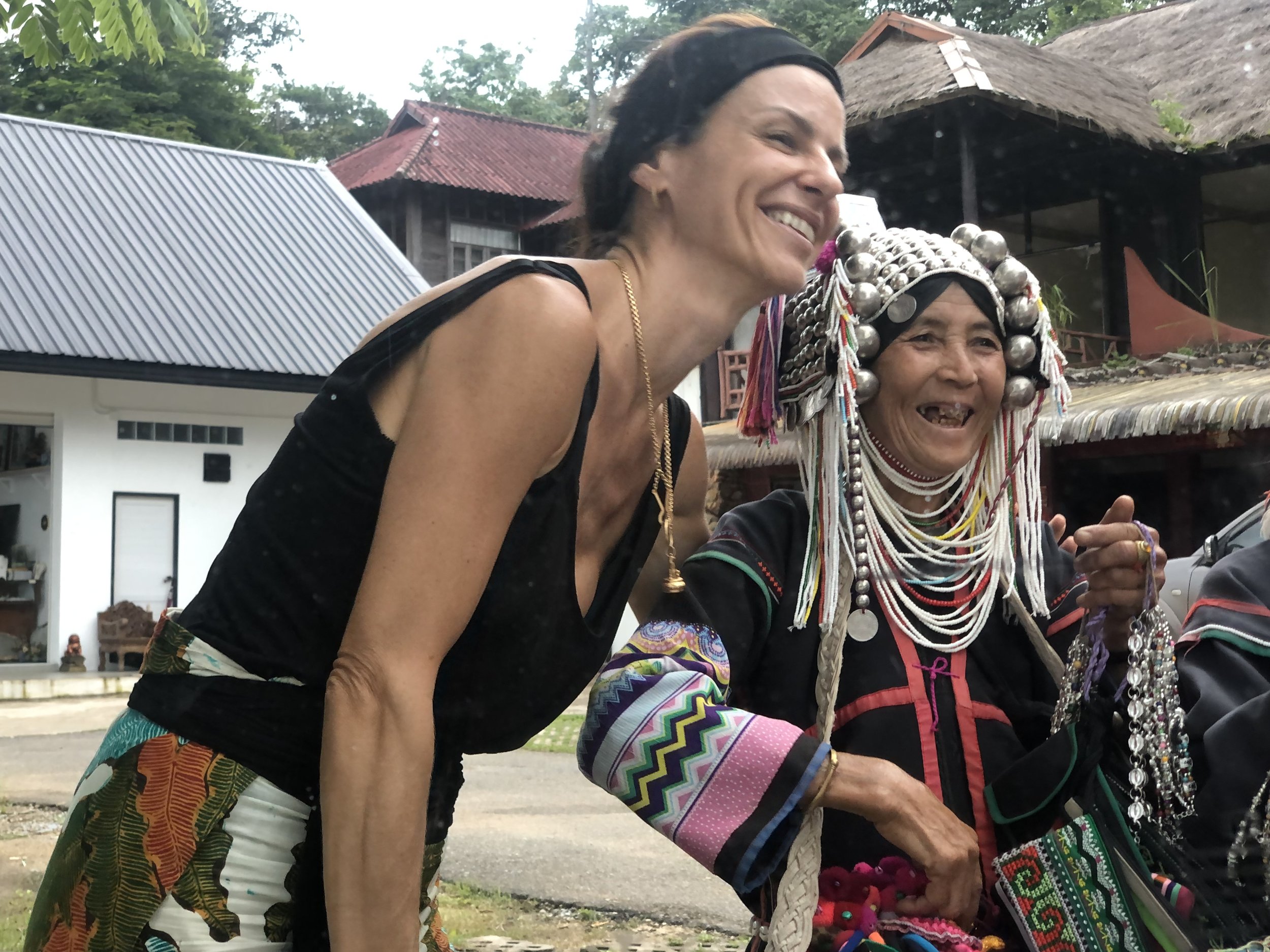
“However, the Akha people are not only dealing with the effects of the past. They are also facing new challenges in the present day, such as human trafficking. Sadly, this is one of the biggest threats that the hill tribe livelihoods are facing today. Many young Akha women are lured into the Thai sex industry, where they are subjected to exploitation and abuse. This not only damages the physical and mental health of the women involved, but it also has a ripple effect on the community as a whole.
Despite the challenges faced by the Akha people, it is important to acknowledge the resilience and strength of their culture. By working together and with outside support, the Akha people can continue to overcome their challenges and preserve their culture for generations to come.”
The Strong Link Between the Hill Tribes and Human-Trafficking Industry of South East Asia.
Trading Women is a 2003 documentary film by anthropologist David A. Feingold, produced by Dean W. Slotar and narrated by Angelina Jolie. It covers human trafficking of girls from hill tribes in Burma, Laos, Thailand and China into the sex industry of Thailand.
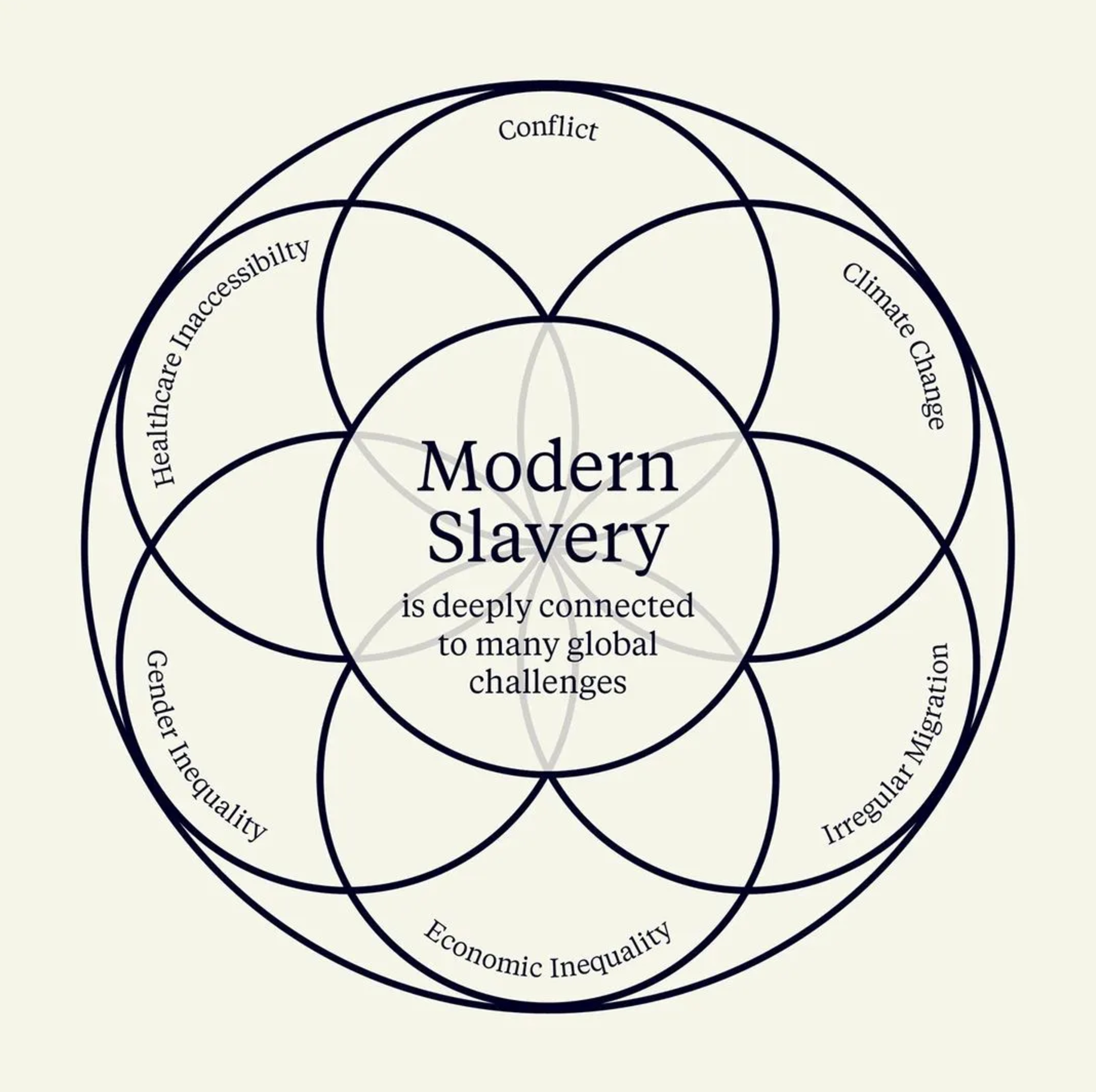
3 Simple Take Aways on
Hill Tribes, Human-Trafficking in the Golden Triangle
Every year 10,000 individuals fall victim to Human-Trafficking
Human Trafficking, aka Modern Slavery, in the Golden Triangle region has been a widespread and serious problem for decades. This illicit activity has been passed down from generation to generation, and it has unfortunately grown to become one of the largest centers for human trafficking in the world.
The severity of the issue is reflected by the staggering number of women, girls, and boys that are bought by the gangs every year, with estimates suggesting that over 10,000 individuals fall victim to this heinous crime annually. The exploitation of these innocent children not only causes immense harm to them, but it also perpetuates a cycle of violence and abuse that affects their families, communities, and ultimately, society as a whole.
It is therefore imperative that we take a strong stance against child trafficking and work towards combating this issue on all fronts. This includes increasing public awareness, providing support to victims, and implementing stricter laws and regulations to prevent this type of criminal activity from continuing. Through collective efforts and continuous education, we can create a safer and more just world for all.
2. Hill Tribes are one of the most vulnerable communities.
Hill tribe communities, comprising of indigenous people living in rural areas, are particularly susceptible to falling prey to child trafficking networks. This is due to a number of factors including their vulnerable immigrant status and extreme poverty, which makes them easy targets for exploitation by organized crime syndicates. The Golden Triangle, this precise area at the intersection of Thailand, Laos, and Myanmar, is particularly notorious for being a safe haven for such criminal groups, who take advantage of the porous borders and the remote location of these communities to carry out their nefarious activities. The rampant abuse and exploitation of children in these areas is a blight on the region and has far-reaching consequences that extend all the way to the capital and beyond. This issue demands urgent attention and concerted efforts by the local authorities, NGOs, and international organizations to combat child trafficking and protect vulnerable communities from falling prey to these heinous crimes.
3. Great people are combating this and trying to help.
In order to combat this problem, the Development and Education Programme for Daughters and Communities Centre in the Greater Mekong Subregion (DEPDC/GMS) has been actively working on the ground for the past 30 years. The organization's founder, Sompop Jantraka, has dedicated his life to raising awareness about the issue and to preventing hill tribe children from being lured into trafficking networks by providing them with education and resources. We came across some of his centers, as they are not difficult to come across when driving the region.
Our Thoughts and Action
At the Akha Swing Festival, also known as the Fertility Festival or Woman’s New Year, happy children are spun like thread into a giant loom. While the cultural significance of this event may not be immediately clear, it is strongly tied to fertility, women, seeds, crops, children, gathering, joy, abundance, food, and life celebration.
The festival features three games made of wood that resemble swings of different types for different ages. Everyone can take part in and enjoy these games, which bring people together and create a mixture of feelings, releasing nervous laughter in all directions across the mountainous backdrops.
Seeing such joy experienced by children of all ages contrasts starkly with the knowledge that child trafficking is a daily threat to families in these communities. As the sun started to set, I sat in silence, imagining the pain, despair, anguish, and helplessness felt by families who are forced to accept the removal of their children, sold to cartels that profit from one of humanity's darkest trades. Human trafficking has long been a part of humanity, and it is always the most vulnerable who are subject to this despicable practice.
…
OUR JOURNALS ARE ALL WORK PROGRESS.
so come back soon for an updated version.
Are You Enjoying This Journal?
Consider supporting us through one of the different ways, so we can continue sharing our Journals with you and others.







